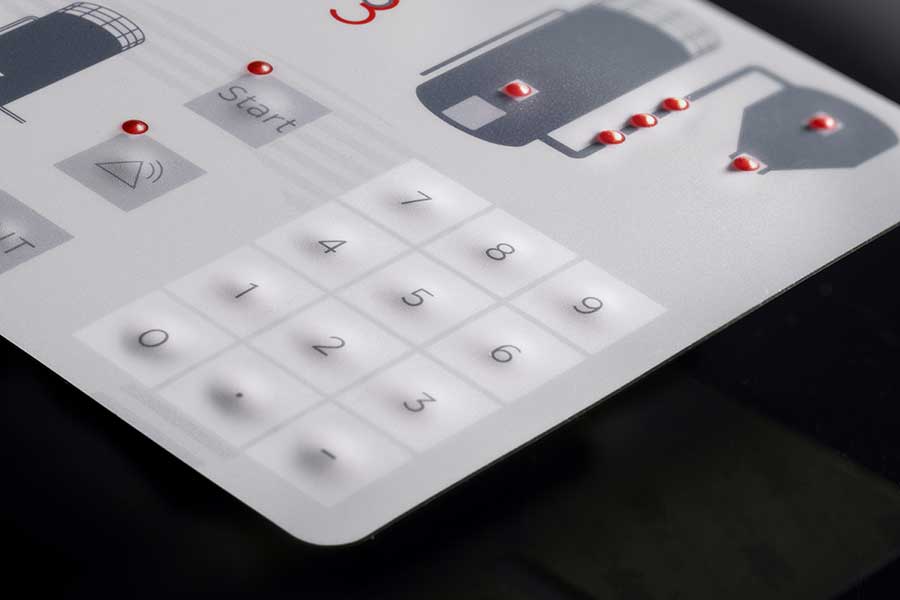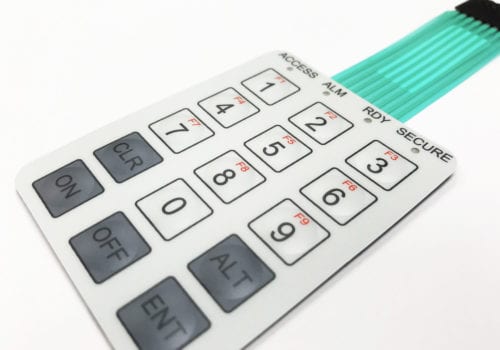The Importance of Membrane Switches in Designing User-Friendly Interfaces
The Importance of Membrane Switches in Designing User-Friendly Interfaces
Blog Article
Membrane Layer Change Technology: The Trick to Reliable and Affordable Interfaces
Membrane layer button technology has arised as a pivotal component in the layout of interface, offering both dependability and cost-effectiveness throughout a diverse series of applications. Its robust building and construction makes sure resistance to environmental obstacles, while the versatility in layout permits for tailored options that satisfy specific market requirements. As we explore the multifaceted benefits of membrane layer buttons, their potential for technology increases inquiries concerning future applications and progressing patterns. What does the next phase hold for this modern technology in a progressively electronic landscape?
Understanding Membrane Layer Switch Over Innovation
Membrane switch modern technology is an extensively used user interface service in different digital gadgets, offering a smooth mix of performance and design. This technology includes numerous layers of materials, generally including a graphic overlay, spacer layer, and a circuit layer. The visuals overlay presents the interface components, while the spacer layer divides the circuit layer from the overlay till an individual turns on a button.
When stress is used to the overlay, the circuit layer finishes the electrical circuit, sending out a signal to the gadget. This mechanism permits for numerous configurations, consisting of responsive responses and backlighting alternatives, boosting individual communication. Membrane layer buttons are generally manufactured making use of resilient products such as polyester or polycarbonate, making sure durability and resistance to environmental elements like dampness and dirt.
The versatility of membrane switches over enables their application in varied markets, consisting of clinical gadgets, consumer electronic devices, and commercial controls. Their small design enables assimilation right into space-constrained settings, providing an efficient interface without jeopardizing aesthetic allure. Recognizing the intricacies of membrane layer button technology is vital for makers and developers seeking to create reputable and efficient human-machine user interfaces.
Trick Benefits of Membrane Layer Buttons
While various interface options exist, membrane switches over deal distinct benefits that make them a preferred option in many applications. One of the main advantages is their durability; membrane switches are developed to stand up to severe ecological problems, consisting of moisture, dirt, and temperature variations, making sure resilient efficiency. This resilience dramatically reduces the demand for constant replacements, therefore reducing total maintenance expenses.

Furthermore, membrane buttons are light-weight and small, making them appropriate for applications where room is restricted. Their low-profile layout adds to a sleek look without endangering capability.
Cost-effectiveness is likewise a significant advantage, as the production process for membrane changes has a tendency to be less costly contrasted to typical mechanical buttons. This price, integrated with their integrity and simplicity of installation, placements membrane layer changes as a functional service for a broad array of industries looking for reliable and effective interface.
Applications Across Numerous Industries
How do membrane layer buttons adapt to the varied demands of different sectors? Membrane button modern technology is significantly identified for its convenience, making it appropriate for a wide array of applications throughout multiple markets.
In consumer electronics, membrane buttons provide a small remedy for push-button controls and home appliances, improving individual experience via instinctive design. Additionally, the industrial industry leverages membrane switches for equipment control panels, benefiting from their resistance to harsh atmospheres, such as wetness and dust.
Armed forces and aerospace applications also utilize membrane buttons for their dependability and capacity to endure severe problems, making sure functional effectiveness in important situations. The food and drink sector takes on these switches for automated systems, where sanitation and simplicity of procedure are extremely important (membrane switch). Ultimately, membrane layer buttons are tailored to meet the special needs of each industry, proving their necessary function in modern technology user interfaces
Style and Modification Options

In the other world of membrane switch innovation, layout and personalization choices play a critical role in enhancing capability and individual interaction. These switches can be customized to meet details operational requirements and aesthetic preferences, making them versatile components in various applications.
One of the primary customization options is the design of the switch itself, which can be made to fit unique individual interfaces and ergonomic factors to consider. By readjusting the form, size, and arrangement of switches, makers can create intuitive layouts that help with convenience of use. Furthermore, the consolidation of different shades and visuals overlays enables for branding and enhanced presence, making certain that customers can swiftly recognize functions.
Additionally, membrane buttons can be engineered with different tactile comments devices, such as increased buttons or audible clicks, to enhance the individual experience. Various products can additionally be selected for durability and environmental resistance, dealing with variables such as wetness, temperature level variations, and chemical direct exposure.
Inevitably, the considerable design and customization choices offered in membrane layer switch innovation encourage organizations to develop tailored remedies that not only fulfill practical demands however likewise align with their branding and functional demands.

Future Fads in Membrane Layer Switches
As membrane button modern technology proceeds to advance, future patterns are increasingly concentrated on boosting individual experience and incorporating advanced functionalities. One significant fad is straight from the source the assimilation of touch-sensitive and capacitive technologies right into conventional membrane layer switches. This advancement enables more intuitive individual interfaces, supplying responsive comments while keeping a smooth layout.
An additional arising trend is using eco-friendly materials, driven by the expanding need for sustainable production techniques. Producers are seeking to lower their carbon footprint by making use of recyclable substrates and low-impact inks, straightening with global sustainability goals.
Additionally, the surge of the Internet of Things (IoT) is motivating the consolidation of wise attributes into membrane buttons. Improved connectivity choices will make it possible for devices to connect with each other, permitting seamless assimilation from this source into wider systems.
Furthermore, improvements in printing modern technologies, such as digital printing, are permitting greater design adaptability and personalization. This allows makers to generate intricate designs and lively shades cost-effectively.

Verdict
Finally, membrane layer button modern technology stands for an important innovation in interface style, offering considerable advantages in toughness, customization, and cost-effectiveness. Its extensive applicability across varied sectors emphasizes its importance in contemporary innovation. As developments proceed to arise, specifically in touch-sensitive user interfaces and sustainable products, the capacity for membrane layer switches over to boost user experience and functionality remains encouraging. Continued expedition of this modern technology will likely produce better enhancements and broaden its extent in future applications.
Report this page